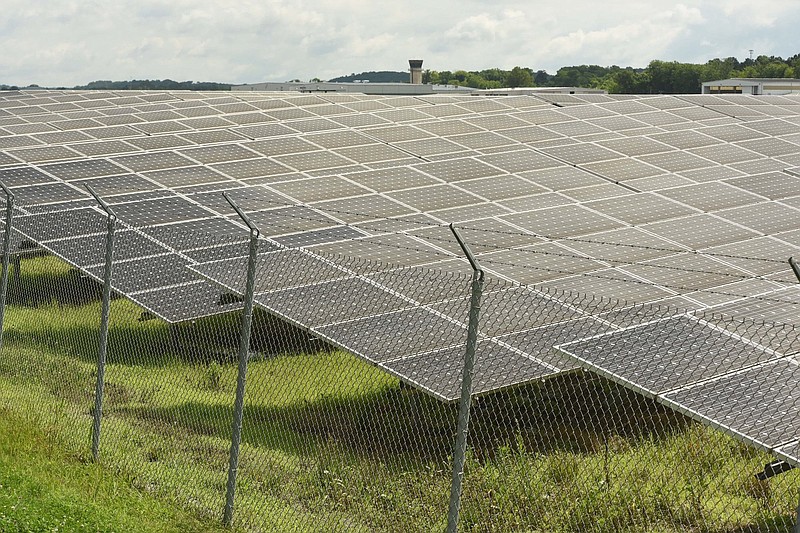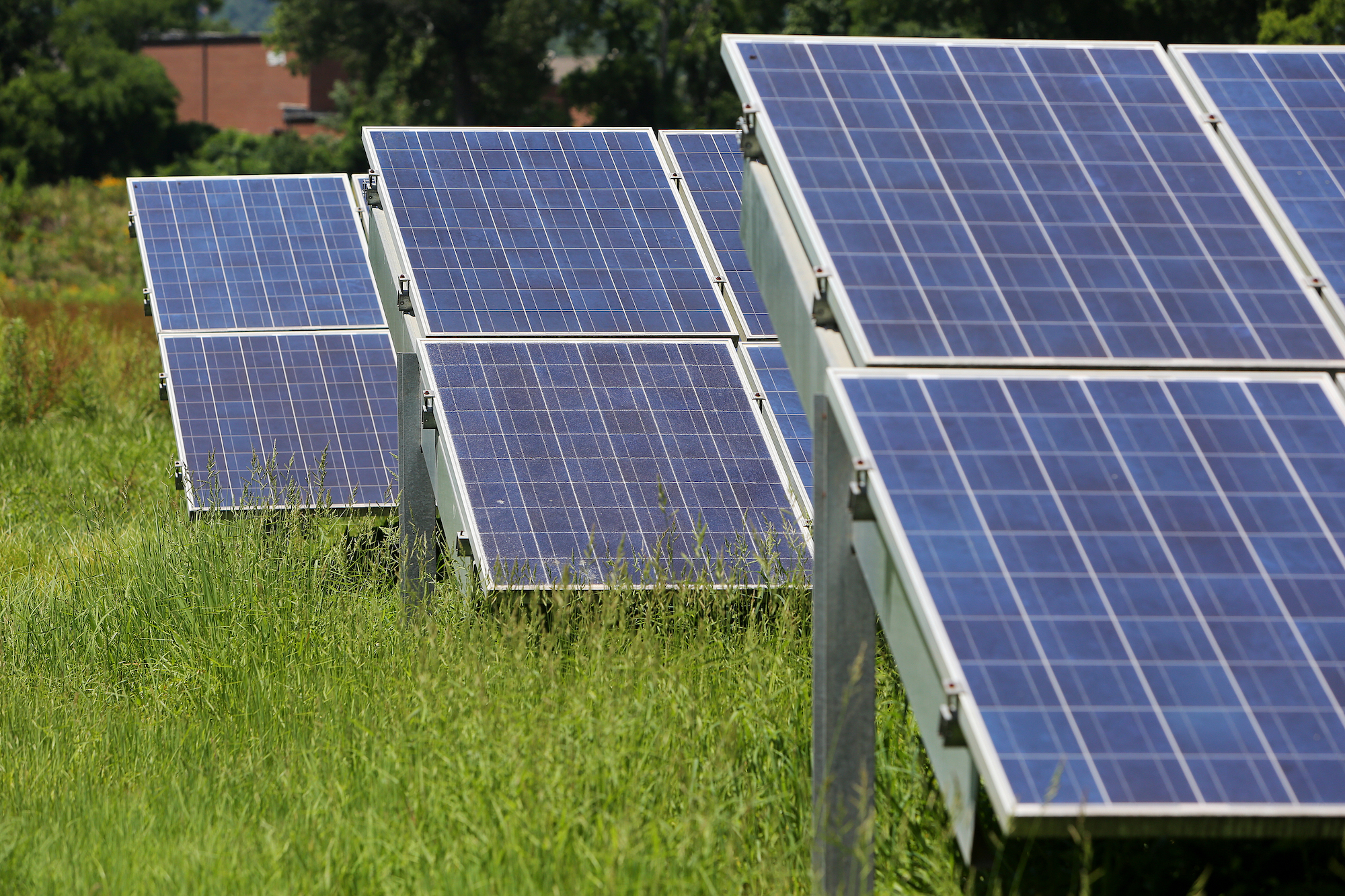America's biggest public power utility is turning to the sun for more of its power, awarding four more solar purchase power contracts in December and preparing later this year to review a record number of proposals for solar, wind, nuclear and other carbon-free power sources.
The Tennessee Valley Authority has trailed most of its neighbors in its share of electricity generated from solar power, but TVA President Jeff Lyash said the federal utility plans to boost its use of solar and other renewable power sources.
"TVA is committed to adding significant amounts of solar and storage to our system," Lyash said in a conference call with industry analysts earlier this week. "We recognize the urgency and TVA's unique opportunity to lead in developing solutions that will deliver a carbon-free energy future."
In response to its request for more solar generation last year, TVA signed power purchase agreements in December with the Nashville-based Silicon Ranch for 160 megawatts of solar generating capacity at new solar farms being built in McNairy, Hardeman, Henry and Lauderdale counties in Tennessee, TVA spokesman Scott Fiedler said in an email.
Last July, TVA issued one of the biggest one-time requests ever by a U.S. utility for carbon-free power, soliciting proposals for up to 5,000 megawatts of carbon-free energy that could be operational by 2029.
Lyash said he is pleased with the response to TVA's requests for proposals for solar and other carbon-free power generation and added the utility hopes to announce awards to winning bidders later this year.
Over the next decade, TVA plans to buy and build 10,000 megawatts of solar power generation and is also providing more flexibility in its power contracts to allow local power companies like EPB in Chattanooga to also generate some of their own power from the sun.
But Lyash said TVA must work to maintain low-cost and reliable power, as well as clean energy, in its seven-state service territory, especially as the growth of electric vehicles is projected to boost overall electricity demand.
The availability and price of solar increased due to supply chain problems during the pandemic, and solar and wind generators need power storage to keep the lights on when the sun doesn't shine or the wind doesn't blow, Lyash said.
But environmentalists insist TVA could do far more, noting that TVA is still relying on fossil fuel for more than a third of its power and is building new natural gas plants at most of the coal plants it is shutting down. The Southern Alliance for Clean Energy labeled TVA "a sunblocker" last year and estimates TVA will generate only about a fourth as much power from the sun as its neighboring utilities in the South.
In January, TVA announced plans to retire its oldest coal plant by 2026. At least half of the power being lost with the planned shutdown of the two coal units at the Cumberland Fossil Plant in Middle Tennessee will be replaced with a 1,450-megawatt combined cycle gas plant, which Lyash said will reduce carbon emissions by 60% compared with the coal-fired generation it will replace.
TVA considered replacing the power lost by the closing of the Cumberland coal plant with solar farms and battery storage to back up the solar generation when the sun doesn't shine. But Lyash said solar power isn't as flexible as the gas-fired generators that can be turned on and off whether or not the sun shines.
"Natural gas is the only mature technology available today that can be in operation to provide firm, dispatchable power by 2026 when the first Cumberland unit retires," Lyash said.
Rather than build another gas plant, Lyash said TVA looked at building 3,000 megawatts of solar generation with 1,700-megawatts of backup battery storage.
"This option would have required more than 21,000 acres of land for solar and over 640 acres for the (battery) storage," he said.
That would be more than five times the size of the entire city of Red Bank just for the solar panels.
Additionally, Lyash said the solar and battery storage option would cost $1.8 billion more than the gas option and would require substantially more power lines to be built.
Although TVA trails neighboring utilities in the share of solar power it produces, TVA still generates more than 60% of its power from carbon-free sources, including more than 40% from its seven nuclear reactors and more than 10% of its power from its 29 hydroelectric dams along the Tennessee River and its tributaries. TVA also contracts to buy both wind and solar power.
Lyash said the recent Winter Storm Elliot, which pushed up TVA's winter power demand to an all-time high and forced TVA to impose rolling background for the first time in his 90-year history, highlighted the need for a diverse and flexible generation portfolio.
"TVA is a stable, reliable partner, and our power grid remains one of the most reliable and resilient in the nation," Lyash said. "Maintaining operational excellence is a top priority for us."
Contact Dave Flessner at dflessner@timesfreepress.com or 423-757-6340.


